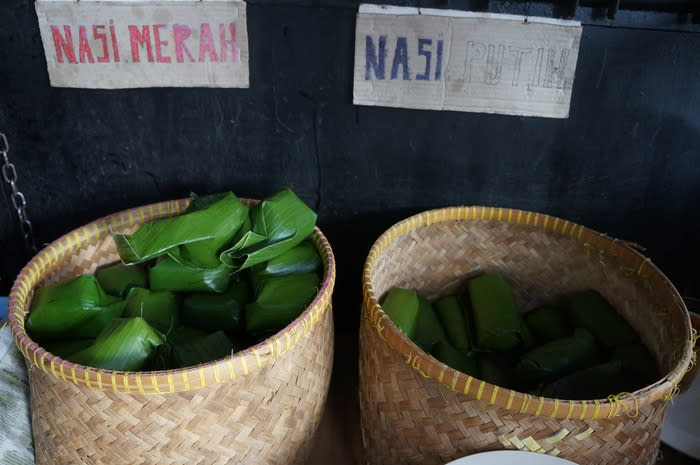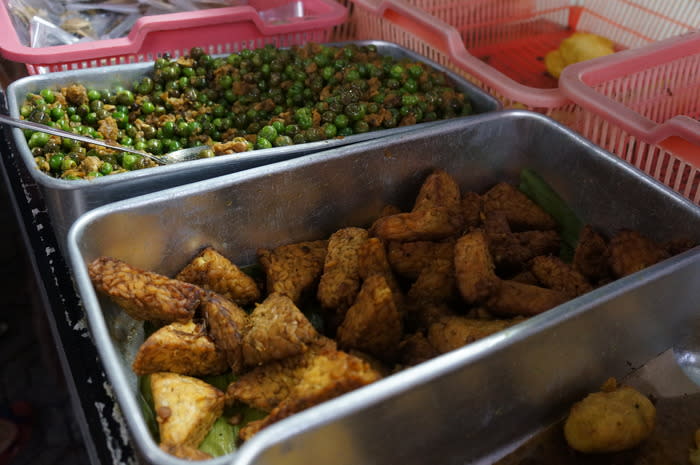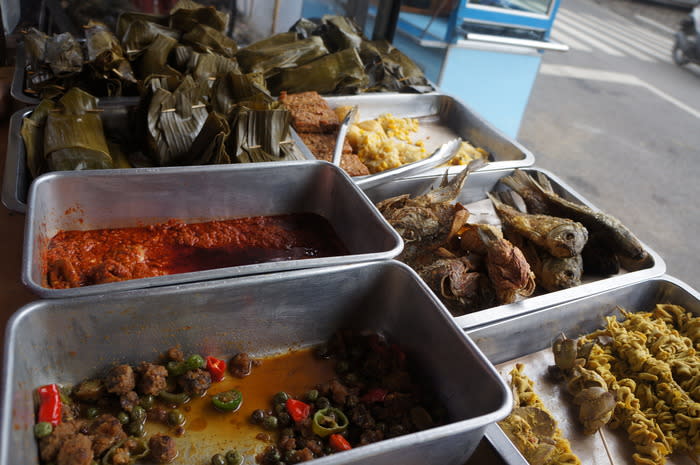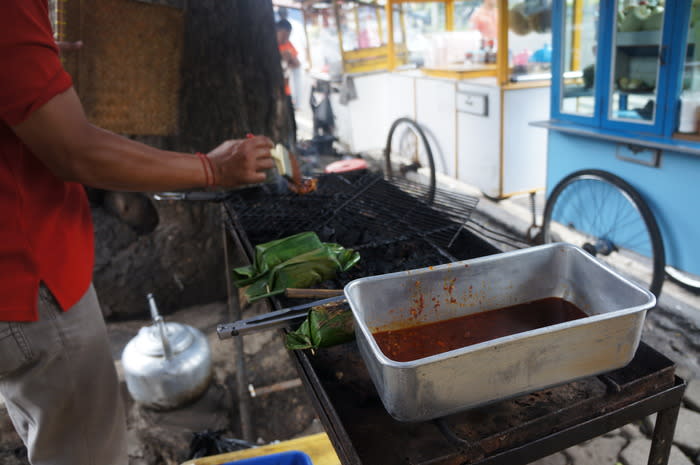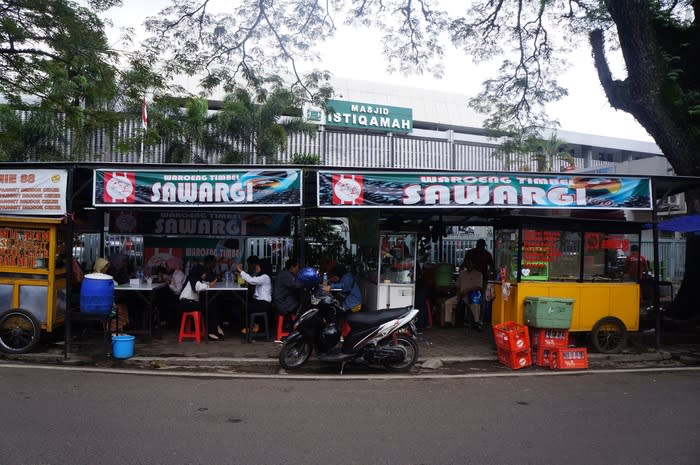The battle of Bandung’s timbels
There are many stories behind the history of the fragrant rice wrapped in banana leaves.
One story says that wrapping the rice in banana leaves was a way of preserving food for the soldiers who fought against the colonials. At that time, the rice was packed using banana leaves, separating the rice from the humble side dishes that accompanied it.
Another story goes on to say that the method of wrapping nasi timbel was used by Priangan (West Javanese) farmers to pack their lunch, which they ate near the paddy fields. The banana leaves helped maintain the warmth of the steamed rice and added a fragrant aroma.
Sometimes, basil leaves are placed inside the rice before it’s wrapped to enhance its aroma and flavor.
People usually eat nasi timbel with side dishes such as fried tofu, tempeh, fried or steamed fish, chicken or fried, spiced slices of meat known as empal.
But nasi timbel’s ultimate companions are sambal (a condiment made of chili’s, tomato, garlic or shallots, palm sugar, salt and sometimes shrimp paste, all mixed using a mortar and pestle) and lalapan (fresh raw vegetables usually comprising cucumber, tomato, cabbage, basil leaves, long bean).
A mini guide to Bandung’s culinary perks
Waroeng Timbel Sawargi
Jl. Taman Citarum (in front of Istigomah Mosque) has been around for 11 years and it opens as early as 6 a.m.
Uwa, a worker there, said that they would usually stay open until 4 p.m. but that lately they have been closing earlier because business had been good, their food would sell-out quickly. As a matter of fact, they were already running out of several side dishes when I visited around 12 p.m.
Uwa said their signature side dishes were pepes ayam (steamed chicken wrapped in banana leaves) at Rp 9,000 (US$ 0.94), grilled chicken-priced at Rp.8,000, grilled timbel rice- priced at Rp 5,000 and sambal dadak (freshly made sambal served in its pestle) at Rp 3,000.
Waroeng Timbel Sawargi wins over its competitors with its wide-variety of timbel rice and side dishes.
I especially loved its fragrant grilled timbel, which contained fish and chicken with basil leaves . I personally thought that their pepes ayam was tastier than the one served at Bawean stall thanks to its generous and creamy glaze.
They offer timbel rice packages starting at Rp 13,000.
Don’t forget to order their fresh juice. I recommend the refreshing soursop, priced at Rp 7.000.
The downside of this stall is its lack of kerupuk (fish crackers), which I consider an important accompaniment .
Their stall is quite open, thus it can be uncomfortable when it’s raining heavily, and although delicious, I find their sambal dadak too spicy for my palate even though I have a high tolerance for spicy food.
On average, dishes are about Rp 1,000 more expensive than Bawean, its competitor.
Nasi Timbel Bawean
Jl. Bawean No.3 (opposite of Bawean Bakery) has been operating since 1986. The stall is open daily from 7 a.m. till 5 p.m.
Its signature side dishes are include fried chicken, pepes ayam –both priced at Rp 8,000, pepes ikan (steamed fish wrapped in banana leaves) at Rp 7,000 and their sambal, of course.
Warung Timbel Bawean has been named by Tripadvisor as one of Bandung’s distinguished culinary spots.
The sambal and lalapan are all-you-can-eat. Kerupuk and durian ice cream are also available.
The stall’s structure makes this place comfortable during the rainy season.
I loved the fried chicken for its crunchy texture and unique taste. My second favorite was the yummy sambal, which strikes the perfect balance of tartness and spice.
At Bawean you can choose between two types of timbel rice: White or brown, which is served inside a bakul (bamboo basket).
Its soursop juice is slightly sweeter than Sawargi’s and cheaper by Rp 1,000.
Which one should you try first? Whatever choice you make, forget about utensils and dig-in with your hands.
Read also: 8 classic dishes not to be missed in Bandung


